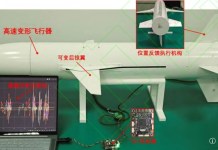A Russian Sukhoi Su-34 fighter jet crashed during a planned training flight in the Khabarovsk Region in the Russian Far East, as per the statement from the Eastern Military District. Both the pilots managed to eject safely from the aircraft.
The fullback combat jet was training without any ammunition load and the crash in a wooded and low-land area caused no damage on the ground, as per the statement.
As per the sources quoted in Russian media, the preliminary reason for the crash appears to be an equipment failure or a technical malfunction. However, a commission of the Eastern Military District is on the site to establish the causes and circumstances of the crash.
The Su-34 was probably operating out of Russia’s Komsomolsk-na-Amure/Khurba airbase, which houses the 11th Red Banner Air and Air Defence Army, 303rd Composite Aviation Division, 277th Red Banner Bomber Aviation Regiment (277 BAP) which operates the Su-34 and Su-24M/M2.
Su-34 Fighter Bomber
Sukhoi Su-34 is among Russia’s most capable all-weather jet fighters, capable of ground, surface, and air attack. Russia has 137 units of Su-34s built under all contracts, including seven experimental and pre-production models, of which two were lost earlier in a crash and four aircraft have been written off due to damage.
Used in combat in Syria and capable of defending Russia in the Arctic, Su-34 is a dual-engine, bomber/ground attack aircraft intended for use against naval and ground-based targets.
The aircraft with duckbill-shaped fuselage has tail boom on the rear, a very noticeable feature, houses a brake parachute, auxiliary power unit, additional fuel, and a smaller rear-facing radar antenna that can warn the pilots if missiles are incoming, according to the company website.
As per the company, Su-34 fighter-bomber performed one of the first confirmed combat applications for the Russian Air Force to combat international terrorism in the Syrian Arab Republic in 2015. The jets endurance and ability to perform attack and reconnaissance functions has impressed RAeF and its Syrian Air Force.
Recently, the fullback fighter jet displayed path-breaking capabilities with a night-time combat exercise reaching to the heights of 15 kilometers at lower stratospheric level, engaging a ‘hypothetical enemy’ at supersonic speed.




